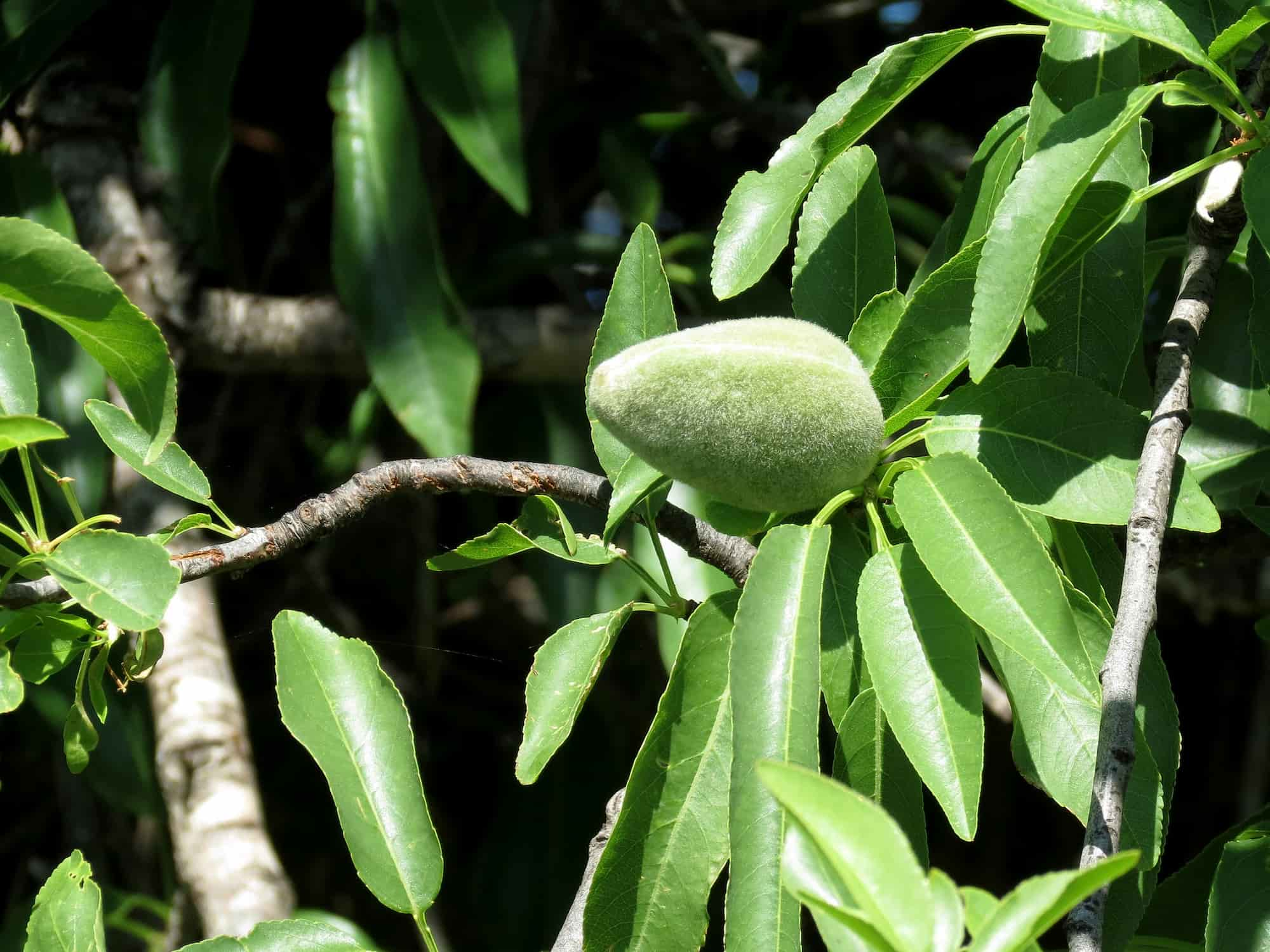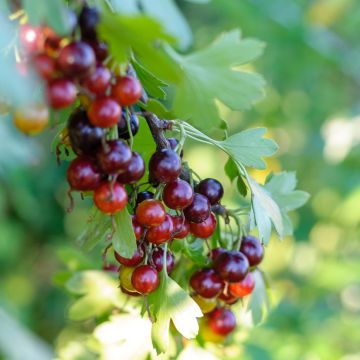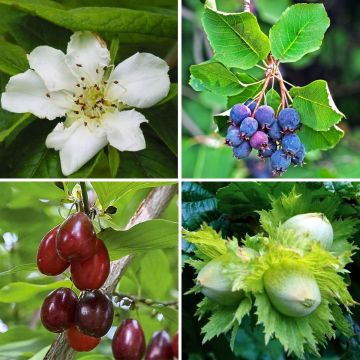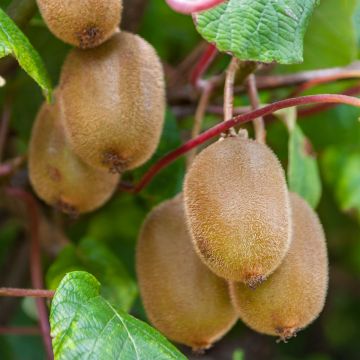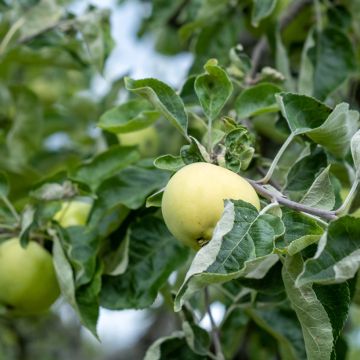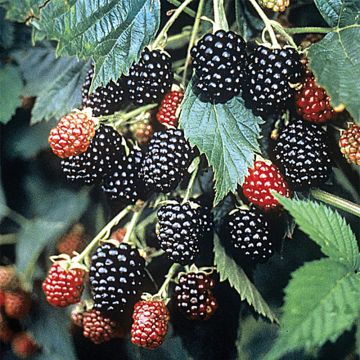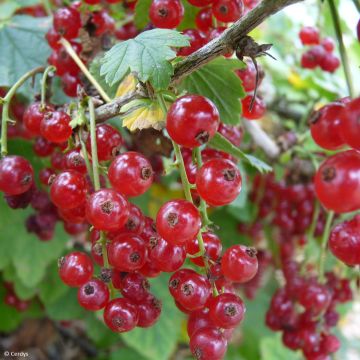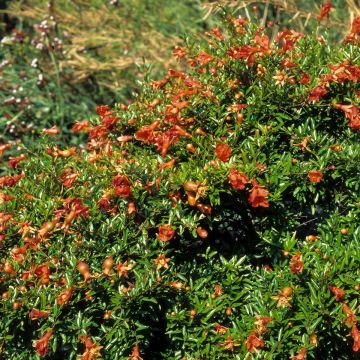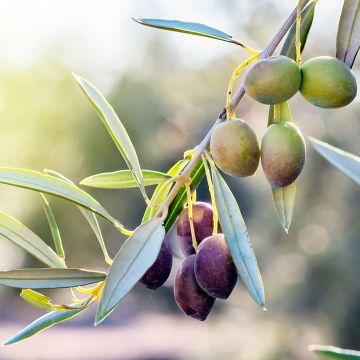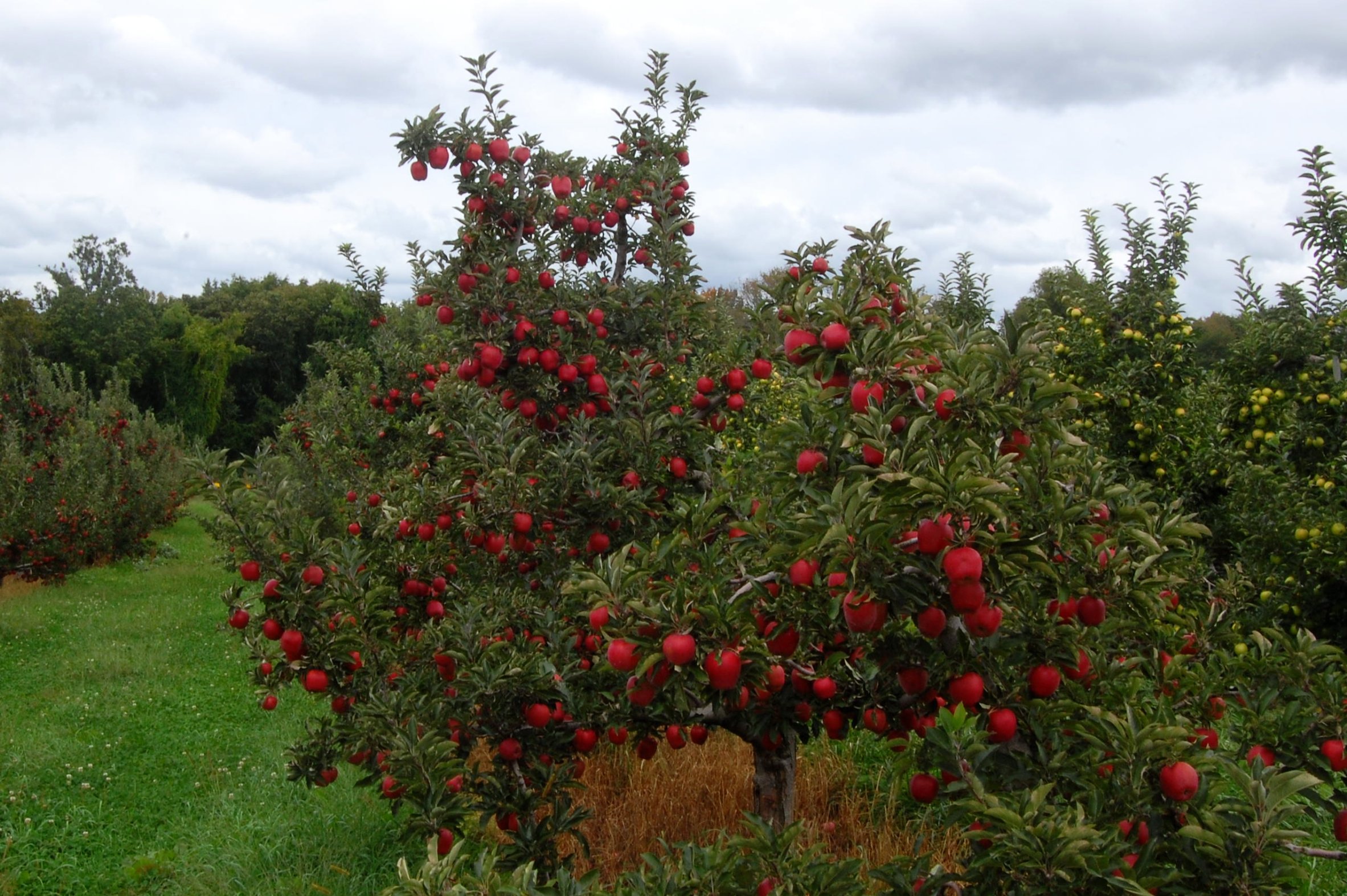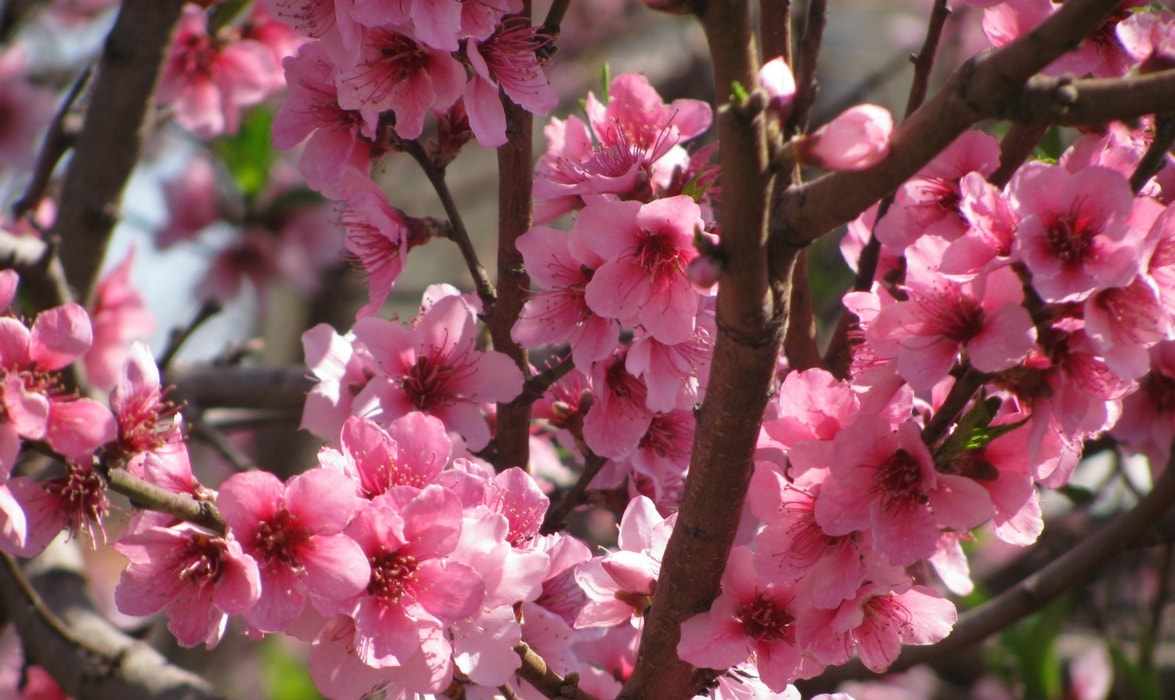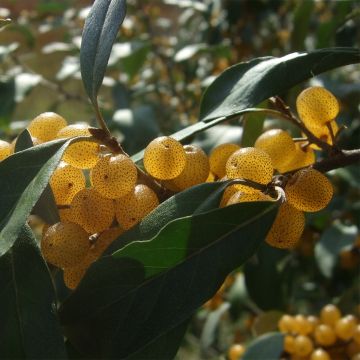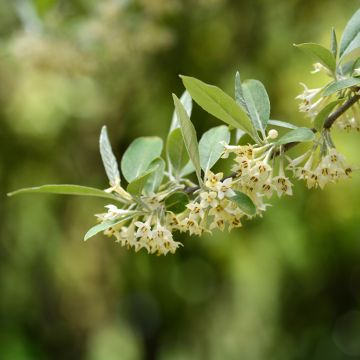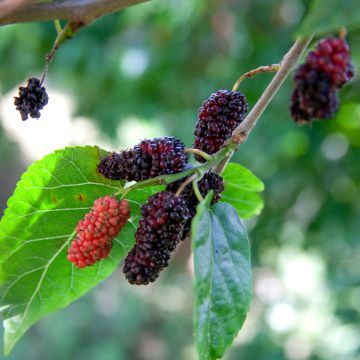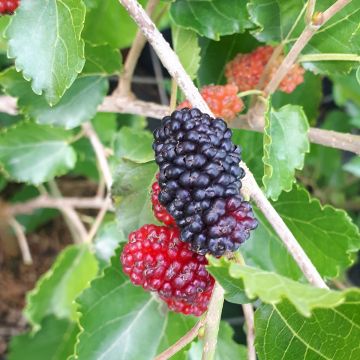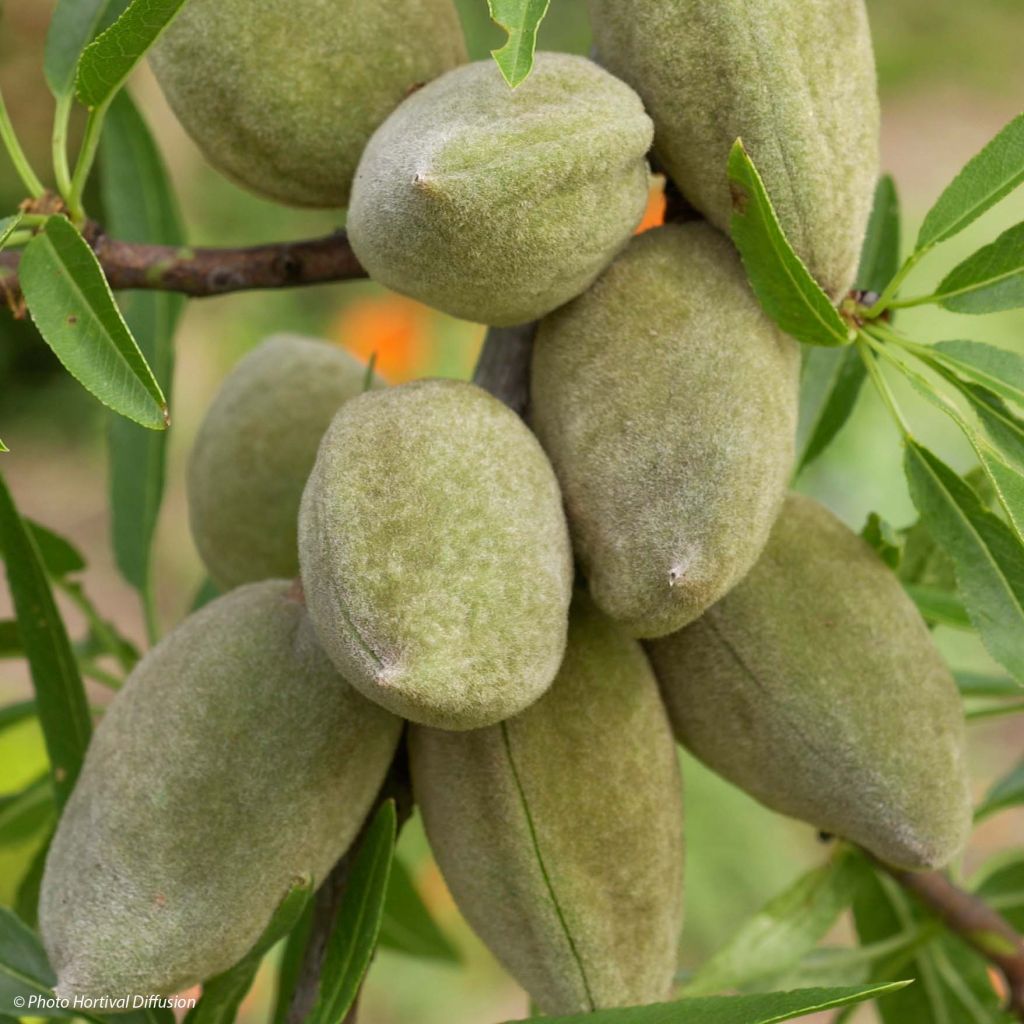

Prunus dulcis Princesse - Almond Tree
Prunus dulcis Princesse - Almond Tree
Prunus dulcis Princesse
Almond
After blooming in spring and producing many almonds, the almond tree dried up. Is it because of the grass cutting at its base, which produces nitrogen?
JFO, 06/08/2024
Special offer!
Receive a €20 voucher for any order over €90 (excluding delivery costs, credit notes, and plastic-free options)!
1- Add your favorite plants to your cart.
2- Once you have reached €90, confirm your order (you can even choose the delivery date!).
3- As soon as your order is shipped, you will receive an email containing your voucher code, valid for 3 months (90 days).
Your voucher is unique and can only be used once, for any order with a minimum value of €20, excluding delivery costs.
Can be combined with other current offers, non-divisible and non-refundable.
Home or relay delivery (depending on size and destination)
Schedule delivery date,
and select date in basket
This plant carries a 6 months recovery warranty
More information
We guarantee the quality of our plants for a full growing cycle, and will replace at our expense any plant that fails to recover under normal climatic and planting conditions.
Description
Prunus dulcis 'Princess' is also known as the pistachio almond tree due to its slightly unique flavour. The shell of the nut is so tender that it bursts under finger pressure, revealing the fragrant white flesh of the sweet nut. The harvest takes place in September. Plant your tree in autumn.
Prunus dulcis and its varieties belong to the Rosaceae family. It is native to central Asia, but has become typical of the Mediterranean region. Its deciduous leaves are alternate, narrow, and lanceolate. It will reach a height of 6 to 10m (20 to 33ft) with a width of 5 to 8m (16 to 26ft). It can live for several decades. It is very hardy, able to withstand temperatures of -20°C (-4°F), but its flowers are destroyed at -2°C (28.4°F). It can be planted in a fruit or ornamental garden, thanks to its beautiful flowering that appears in late winter.
'Princess' flowers in March. It is sensitive to spring frosts. In cold regions, plant 'Princess' with the shelter of a wall and a favourable exposure. Partially self-fertile, it will be more productive in the presence of another variety, such as 'Texas', which is a good pollinator.
The almond is actually the inside of the seed. A shell protects this almond, which is itself contained in a fuzzy envelope that opens when ripe. For harvesting, the shells are collected on the ground. The branches can be shaken to loosen the nuts. They are then dried, spread out in the sun, and left for several days. Once dry, the almonds can be stored for several months in a dry and well-ventilated place. In May and June, it is also possible to pick fresh (green) almonds by hand. These will keep for just a few days. Almonds can be cooked with their skin, blanched (without the skin), sliced, or crushed. They are mainly consumed in desserts or in savoury dishes such as tagines, for example. They are an oily fruit, which can sometimes cause allergic reactions.
Prunus dulcis Princesse - Almond Tree in pictures
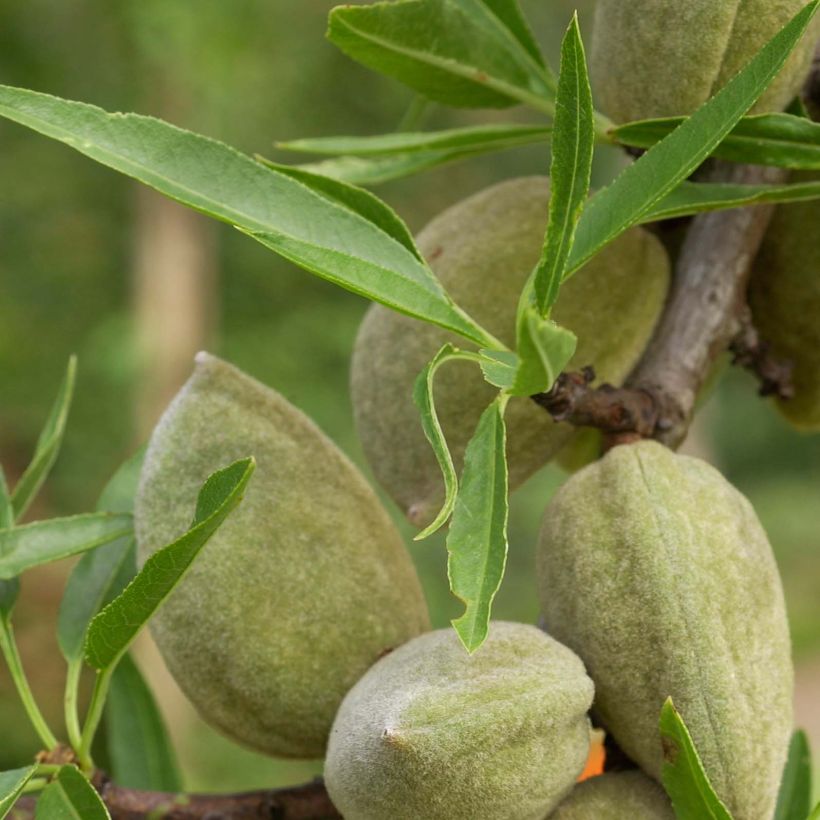

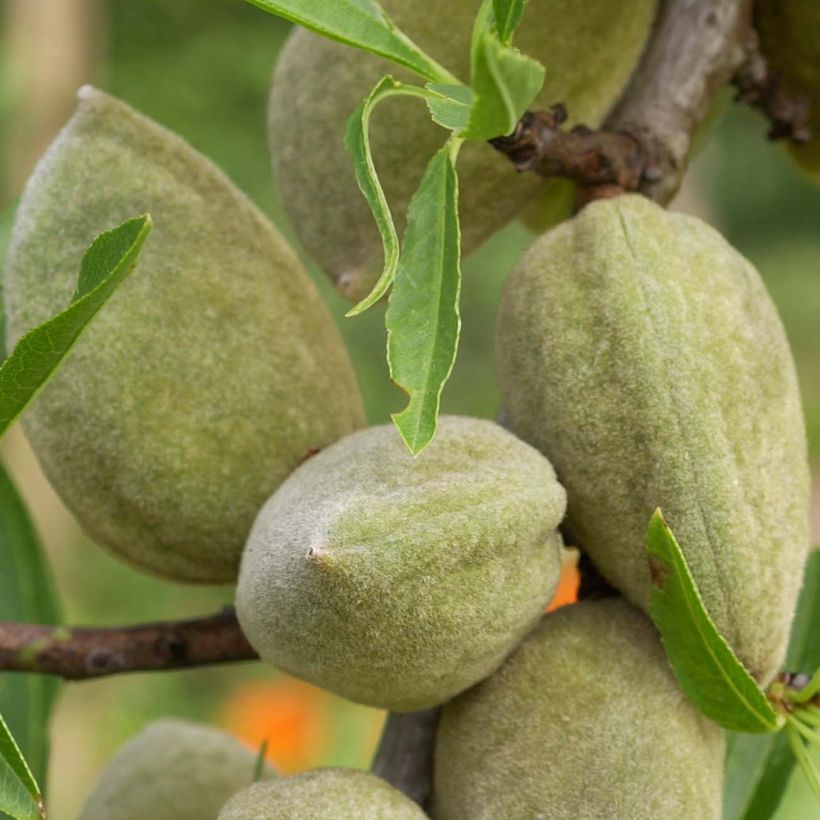

Plant habit
Fruit
Flowering
Foliage
Botanical data
Prunus
dulcis
Princesse
Rosaceae
Almond
Cultivar or hybrid
Other Fruit trees A to Z
View all →Planting and care
Plant in autumn. Choose a sunny and sheltered location. It thrives in all types of soils, including rocky and slightly chalky ones. It prefers well-drained and light soils. If you plant multiple trees, space them 5 to 6m (16 to 20ft) apart.
For bare root plants, soak the roots for a day in praline, to prevent the formation of air pockets between the roots and the soil. You can either prepare praline by mixing 1/3 very fine soil or compost, 1/3 cow dung or compost, and 1/3 rainwater, or buy it commercially. Loosen the soil deeply, and remove rocks and unwanted weeds. Add some sand to improve drainage. Dig a hole 3 to 4 times the volume of the root ball, place the root ball, and cover with soil. Form a basin around the base and water generously.
In spring, apply well-rotted compost by surface raking, taking care not to damage the roots. Water in the first year of planting, then as needed, mainly in case of high temperatures.
Planting period
Intended location
Care
Planting & care advice
-
, onOrder confirmed
Reply from on Promesse de fleurs
Similar products
Haven't found what you were looking for?
Hardiness is the lowest winter temperature a plant can endure without suffering serious damage or even dying. However, hardiness is affected by location (a sheltered area, such as a patio), protection (winter cover) and soil type (hardiness is improved by well-drained soil).

Photo Sharing Terms & Conditions
In order to encourage gardeners to interact and share their experiences, Promesse de fleurs offers various media enabling content to be uploaded onto its Site - in particular via the ‘Photo sharing’ module.
The User agrees to refrain from:
- Posting any content that is illegal, prejudicial, insulting, racist, inciteful to hatred, revisionist, contrary to public decency, that infringes on privacy or on the privacy rights of third parties, in particular the publicity rights of persons and goods, intellectual property rights, or the right to privacy.
- Submitting content on behalf of a third party;
- Impersonate the identity of a third party and/or publish any personal information about a third party;
In general, the User undertakes to refrain from any unethical behaviour.
All Content (in particular text, comments, files, images, photos, videos, creative works, etc.), which may be subject to property or intellectual property rights, image or other private rights, shall remain the property of the User, subject to the limited rights granted by the terms of the licence granted by Promesse de fleurs as stated below. Users are at liberty to publish or not to publish such Content on the Site, notably via the ‘Photo Sharing’ facility, and accept that this Content shall be made public and freely accessible, notably on the Internet.
Users further acknowledge, undertake to have ,and guarantee that they hold all necessary rights and permissions to publish such material on the Site, in particular with regard to the legislation in force pertaining to any privacy, property, intellectual property, image, or contractual rights, or rights of any other nature. By publishing such Content on the Site, Users acknowledge accepting full liability as publishers of the Content within the meaning of the law, and grant Promesse de fleurs, free of charge, an inclusive, worldwide licence for the said Content for the entire duration of its publication, including all reproduction, representation, up/downloading, displaying, performing, transmission, and storage rights.
Users also grant permission for their name to be linked to the Content and accept that this link may not always be made available.
By engaging in posting material, Users consent to their Content becoming automatically accessible on the Internet, in particular on other sites and/or blogs and/or web pages of the Promesse de fleurs site, including in particular social pages and the Promesse de fleurs catalogue.
Users may secure the removal of entrusted content free of charge by issuing a simple request via our contact form.
The flowering period indicated on our website applies to countries and regions located in USDA zone 8 (France, the United Kingdom, Ireland, the Netherlands, etc.)
It will vary according to where you live:
- In zones 9 to 10 (Italy, Spain, Greece, etc.), flowering will occur about 2 to 4 weeks earlier.
- In zones 6 to 7 (Germany, Poland, Slovenia, and lower mountainous regions), flowering will be delayed by 2 to 3 weeks.
- In zone 5 (Central Europe, Scandinavia), blooming will be delayed by 3 to 5 weeks.
In temperate climates, pruning of spring-flowering shrubs (forsythia, spireas, etc.) should be done just after flowering.
Pruning of summer-flowering shrubs (Indian Lilac, Perovskia, etc.) can be done in winter or spring.
In cold regions as well as with frost-sensitive plants, avoid pruning too early when severe frosts may still occur.
The planting period indicated on our website applies to countries and regions located in USDA zone 8 (France, United Kingdom, Ireland, Netherlands).
It will vary according to where you live:
- In Mediterranean zones (Marseille, Madrid, Milan, etc.), autumn and winter are the best planting periods.
- In continental zones (Strasbourg, Munich, Vienna, etc.), delay planting by 2 to 3 weeks in spring and bring it forward by 2 to 4 weeks in autumn.
- In mountainous regions (the Alps, Pyrenees, Carpathians, etc.), it is best to plant in late spring (May-June) or late summer (August-September).
The harvesting period indicated on our website applies to countries and regions in USDA zone 8 (France, England, Ireland, the Netherlands).
In colder areas (Scandinavia, Poland, Austria...) fruit and vegetable harvests are likely to be delayed by 3-4 weeks.
In warmer areas (Italy, Spain, Greece, etc.), harvesting will probably take place earlier, depending on weather conditions.
The sowing periods indicated on our website apply to countries and regions within USDA Zone 8 (France, UK, Ireland, Netherlands).
In colder areas (Scandinavia, Poland, Austria...), delay any outdoor sowing by 3-4 weeks, or sow under glass.
In warmer climes (Italy, Spain, Greece, etc.), bring outdoor sowing forward by a few weeks.






























